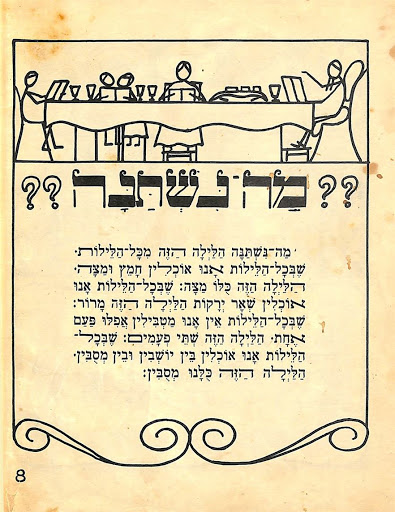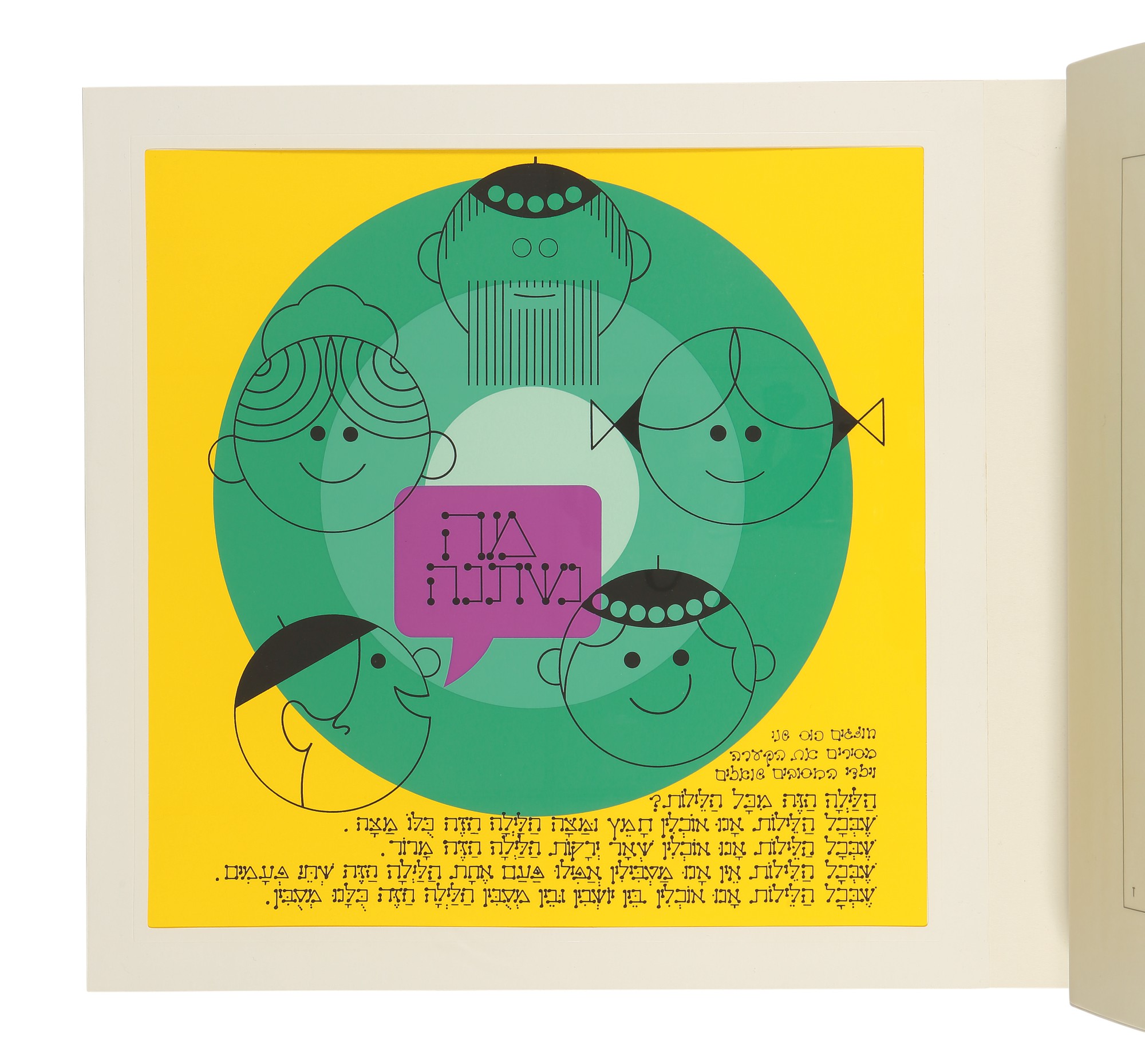Romm Press, Haggadah Art, Controversial Books, and other Bibliographical Historica
Legacy Auctions: Romm Press, Haggadah Art, Controversial Books, and other Bibliographical Historica
Legacy Judaica’s fall auction is next week, September 13, and we wanted to highlight some bibliographical historica. Lot 95 is Elbona shel Torah, (Berlin, 1929), by R. Shmuel Shraga Feigneshon, known as Safan ha-Sofer. He helmed the operations of the Romm Press in Vilna. During his 55-year tenure, he oversaw the publication of the monumental Vilna Shas, among numerous other canonical works that became the model for all subsequent editions. He wrote a history of the press which first appeared in part in the journal HaSofer (vol. 1 27-33 and vol. 2-3 46-57, 1954-55). It was then published in its entirety in Yahadut Lita vol. 1. 1959. This biography was plagiarized in nearly every respect by the Yated Ne’eman. It was a near-perfect reproduction (albeit in English rather than the original Hebrew), except that certain names and select passages were omitted presumably because they reference Jewish academics or other materials deemed objectional to Haredi audiences.
In Elbona shel Torah, (51-52), Shafan Ha-Sofer discusses the censorship of Jewish texts from non-Jewish authorities. There were not only omissions but also additions to the text. He identifies one of the angels mentioned in the supplications between the Shofar sets with Jesus. He claims that “Yeshu Sa’ar ha-Pinim” is in fact Jesus of Nazareth. Nonetheless, he notes that this passage was included in most mahzorim. Indeed, in the first Romm edition of the Mahzor this angel appears. He explains that after it was published a rabbi from Yemen, who was unfamiliar with the historic inclusion of the passage, was shocked when he came this passage. He immediately set about issuing a ban on all the Romm books, classifying them within the category of a sefer torah of a heretic which is consigned to the fire. But the ban was annulled after a Jerusalem rabbi intervened and explained to his clergy brother that in fact the Romm edition merely followed an accepted text. According to Shafan ha-Sofer, after this brush with what is described as potential financial ruin, later editions of the Vilna Mahzor omit Yeshu.
Two books feature on their title pages an immodest Venus rising. The title page of R. Moshe Isserles, Torat ha-Hatat, Hanau, 1628, lot 33, depicts in the bottom center of page Venus with a loincloth. Additionally, on the two sides of the pages two similarly exposed women appear in medieval costume. This particular title page was reused on at least three other books. A similarly undressed woman appears on the title page of R. Isaac of Corbeil’s Amudei Golah, Cremona 1556, lot 1.
Naftali Hertz Wessley’s, Divrei Shalom ve-Emet, Berlin, 1782, lot 99, (volume 2), is the controversial work wherein he provides his educational program. Although some of his other works secured the approbations of leading Orthodox rabbi, some of the more traditional rabbis were opposed to Wessley’s reforms advocated in Divrei. See our discussion here, and Moshe Samet, Hadash Assur min ha-Torah (Jerusalem, Carmel, 2005), 78-83; Edward Breuer, “Naphtali Herz Wessely and the Cultural Dislocations of an Eighteenth-Century Maskil,” in New Perspectives on the Haskalah, Shmuel Feiner and David Sorkin eds., (London, Littman Library, 2001), 27-47.. Wessley advocated for the inclusion of some secular studies, separate grades for children of different ages and abilities, and satisfying testing requirements. These and many others of his suggested reforms are now commonplace in Orthodox schools. He was interested in improving all aspects of Jewish education and chided his more acculturated Jews who only adopted his policies as they related to secular subjects but did not otherwise incorporate contemporary intellectual rigor to their Jewish studies. Copies of the originals of the work are rare.
Another book that aroused a controversy is R. Zechariah Yosef Rosenfeld of St. Louis’ work, Yosef Tikva, St. Louis, 1903. Rosenfeld defends the use of machine manufactured matzot for Passover. There is a significant literature regarding the use of these matzot, see Hayim Gartner, “Machine Matzah, the Halakhic Controversy as a Test Case for Defining Orthodoxy,” in Orthodox Judaism: New Perspectives, (Jerusalem, Magnes Press, 2006), 395-425 (Hebrew) and Jonathan Sarna, How Matzah Became Square: Manischewitz and the Development of Machine-Made Matzah in the United States, (New York, Touro College, 2005) .
Another Passover item Yaakov Agam’s limited edition of the Haggadah, Paris, 1985, lot 138. Agam adds a rich color palette to the otherwise spare style of the German illustrator, Otto Geismar. His 1928 haggadah uses minimalism to great effect and has a whimsical flair, yet at times the thick black ink figures are dark and foreboding. Agam’s offers of a kaleidoscopic version of the haggada that is purely uplifting.

Otto Geismar, Berlin 1928

Yaakov Agam, Paris 1985
Aside from the books, one letter of note, Lot 182. In 1933 letter from R. Hayim Ozer Grodzensky writes that he had proclaimed a fast in Vilna in response to the rise of Hitler and that “the new persecutions will cause the old to be forgotten.” Despite the fact that R. Ozer recognized almost immediately the threat of Hitler, during WWII he was not as prescient. As late as March 1940, he was encouraging Jews to remain in Vilna. See Eliezer Rabinowitz, R. Hayim Ozer’s Prophesy for Vilna has Been Fulfilled,” Morgen Journal, May 8, 1940.
Two final items, both relate to the Volozhin yeshiva. The first is a copy of Meil Tzedakah, Prague 1756, lot 158that belonged to R. Yosef Dov Soloveitchik, the Bet ha-Levi, and rosh ha-yeshiva of Volozhin. The book also belonged to the Vilna rabbi, R. Abraham Pasveller, and R. Chaim Soloveitchik. The second, lot 166, is a letter by the R. Naftali Berlin, Netziv, the Bet Ha-Levi’s co-Rosh ha-Yeshiva and eventual disputant. He writes to the journal HaTzfirah (see these posts (here, here and here) regarding the Netziv and reading the contemporary press), regarding 1886 fire in Volozhin Yeshiva and the rebuilding efforts. Among other things, he sought to publicizes the names of donor and provided a list from memory. Among the donors was Yisrael Brodsky. Although Brodsky was a major donor to the Volozhin Yeshiva and a highly acculturated Orthodox Jews, some have attempted to portray him otherwise. See our post “For the Sake of Radin! The Sugar Magnate’s Missing Yarmulke and a Zionist Revision.”



7 thoughts on “Romm Press, Haggadah Art, Controversial Books, and other Bibliographical Historica”
I can’t help noting that the author of Me’il Tzedakah (I looked at it some years ago and found much to admire in it) Eliyahu Ha-Kohen Ha-Ittamari, author of Shevet Mussar, was a moderate Sabbatian. Which indicates the porousness of many of these boundaries especially where the circulation of texts is concerned.
The Meil Tzedaka referred to here is the widely quoted שו”ת sefer from R’ Yonah Landsofer.
See the listing here: https://us.bidspirit.com/ui/lotPage/source/catalog/auction/11333/lot/107005/R-Yosef-Dov-HaLevi-Soloveitchik?lang=en
וכיון שנפל היסוד נפל הבנין
Can you pinpoint when people wifely came to know that the author of Shevet Mussar was a Sabbatean? The book went through many editions in the 18th century.
The above mentioned Me’il Tzedakah listing is not R. Eliyahu HaCohen, though per your question – see Scholem’s article in Sefer HaYovel Lechvod Alexander Marx (70th birthday):
http://www.daat.ac.il/daat/vl/YovelMarks/YovelMarks13.pdf
Scholem does not answer my question, nor does Werses in his earlier article. חמדת ימים quotes from Shevet Mussar. I think the Sabbatian beliefs of the author were known to cognoscenti but simply ignored.
If Prof. Hundert, who has researched this far more deeply than I, doesn’t know the answer to this I have to beg ignorance. And thank you for pointing out the need to be more careful than I was in my first post.
ted talks